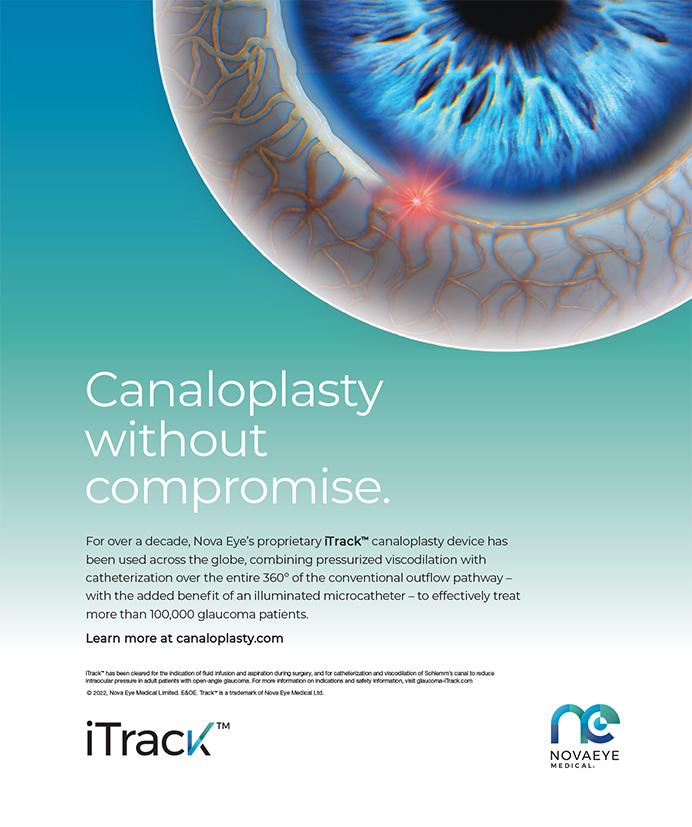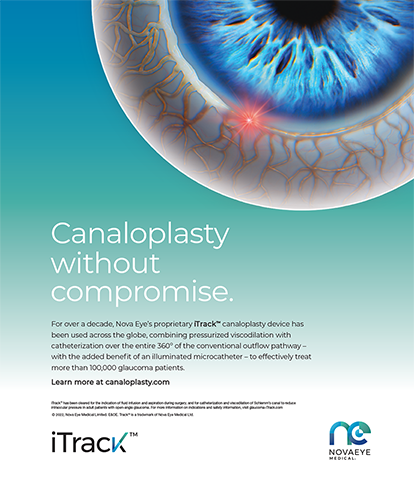What methods do you use in your practice to educate cataract patients about the benefits of multifocal and accommodating IOLs?
William J. Fishkind, MD
believe that premium IOLs must be discussed with every patient who is scheduled for cataract surgery. The exception to this rule is patients in whom a premium IOL is contraindicated. This broad approach is essential because, if a surgeon does not discuss all of the options with a patient, he or she may discover during a discussion with a friend that a particular IOL was available but not offered. This undoubtedly will produce instantaneous conflict between the physician and patient.
I use the Epic System (Marco) to perform wavefront analysis, keratometry readings, and pupil-size analysis on all patients preoperatively. Based on the findings, I ascertain if a premium IOL is indicated. If so, I offer each patient a monofocal, toric, or multifocal IOL. I offer limbal relaxing incisions if the cylinder is between 0.75 and 1.25 D. If the cylinder is greater than 1.25 D, I offer a toric IOL. I offer a multifocal IOL to all patients and automatically perform limbal relaxing incisions when the cylinder is greater than 0.50 D.
I show patients a poster of enlarged monofocal, toric, and multifocal IOLs while I discuss the risks and benefits of each style of lens. I conscientiously discuss multifocal rings and halos, anticipated reading distance, and the risk of dissatisfaction with the visual outcome, which may necessitate explantation of the IOL and replacement with a monofocal IOL. I also review the cost of each treatment modality. Finally, I show patients an 8-minute video that highlights our discussion of the different IOLs. The video is a refinement of images from my practice's library (Eyemaginations Inc.).
Regardless of my efforts, I regularly see patients make decisions based on the cost of the procedure alone. They have difficulty understanding the sophistication of the various toric and multifocal treatments that are available.
James C. Loden, MD
Educating our patients about presbyopia-correcting IOLs is a multitiered process that begins on first contact. When patients are scheduled for an evaluation for cataract surgery, we mail them an informational packet that includes a brochure about customized cataract surgery. Once the technician begins his or her workup, the patient must sign a form stating if he or she wishes to have topography performed to be considered for a customized cataract package. If the patient defers the charge of $75 per eye and wishes to undergo traditional cataract surgery with implantation of a monofocal IOL, the doctor and staff immediately know not to devote additional resources to counseling the patient. This approach has increased throughput and surgeons' efficiency in our practice. Fifty-five percent of our patients defer topography and the customized cataract package secondary to cost.
If the patient indicates on the form that he or she is interested in the customized cataract package, a premium-channel technician takes over the workup. This technician is trained and responsible for discussing the premium IOL. It is also his or her responsibility to provide a premium customer service experience.
After pupillary dilation and all the tests are performed, the doctor makes the final recommendations. Scheduling and detailed counseling are performed by our LASIK/premium IOL counselors. Animations offered by Eyemaginations Inc. are used to help set the patient's expectations.
In our practice, we expect a maximum conversion rate of 20% to a premium product based on financial restrictions and the level of pathology present. I feel that it is the surgeon's ethical responsibility not to “push” patients into a product that they may not be able to afford or may not be suited for based on ocular pathology.
R. Bruce Wallace III, MD
Our new patient forms include a questionnaire that asks patients to rank their level of interest in reducing their need for spectacles. Those patients who are found to be candidates for cataract surgery are introduced to the option of multifocal IOLs during my discussion of the risks and potential benefits of cataract surgery. I discourage recommending and frequently decline to advocate multifocal IOLs for individuals with preexisting ocular conditions such as maculopathy, irregular astigmatism, advanced glaucoma, and other ocular comorbidities. I encourage patients who are candidates for multifocal IOLs, and who have interest in reducing their dependence on spectacles, to consider this option. These patients then visit with a surgical counselor, who explains the multifocal IOLs in greater detail, including the out-ofpocket expense. If they wish to proceed, they also speak with my associate Robert Crotty, OD, who has extensive experience with patients who have received multifocal lenses and who will likely observe these patients after their surgery.
Robert J. Weinstock, MD
In our practice, we use a full spectrum of tools to educate patients about refractive cataract surgery and premium IOLs. Our external marketing includes billboards, an LED sign in front of our office, and monthly, live seminars about cataract surgery that are advertised in the local newspapers. The three-dimensional live surgery is extremely well received, because it allows patients to learn about and experience refractive cataract surgery in a fun and engaging way without commitment. After the seminar, we offer free cataract screenings and educate patients about the advanced technologies that we use such as three-dimensional image guidance, intraoperative aberrometry, and the femtosecond laser.
Internally, we have a lengthy brochure for patients to read while they are waiting that discusses all aspects of the cataract procedure, including astigmatic correction with the femtosecond laser and toric and presbyopiacorrecting implants. In addition, patient advocates discuss cataract surgery with patients and answer their questions in the waiting room. During the examination, dedicated cataract technicians further educate patients about the advantages of refractive cataract surgery.
After I examine the patient, I usually make a recommendation for cataract surgery, astigmatic correction, and/or an accommodating IOL. I generally tell patients that this is what I would choose for my own or my parents' eyes. I use a large model of the eye and a model implant as a visual aid to help patients understand the procedure. Of course, plenty of patients are better suited for a toric or multifocal IOL, and some are better served by traditional surgery with a monofocal implant, which is discussed with the patient and offered. I try not to discuss money but rather focus on what is best for the patient's eyes and his or her quality of life. After the examination is complete, a surgery counselor meets with the patient, reviews the doctor's recommendation, answers questions, discusses pricing, and schedules the surgery.
Section Editor Alan N. Carlson, MD, is a professor of ophthalmology and chief, corneal and refractive surgery, at Duke Eye Center in Durham, North Carolina.
Section Editor Steven Dewey, MD, is in private practice with Colorado Springs Health Partners in Colorado Springs, Colorado.
Section Editor R. Bruce Wallace III, MD, is the medical director of Wallace Eye Surgery in Alexandria, Louisiana. Dr. Wallace is also a clinical professor of ophthalmology at the Louisiana State University School of Medicine and an assistant clinical professor of ophthalmology at the Tulane School of Medicine, both located in New Orleans. He is a consultant to Abbott Medical Optics Inc. and Baucsh + Lomb. Dr. Wallace may be reached at (318) 448-4488; rbw123@aol.com.
William J. Fishkind, MD, is the codirector of Fishkind and Bakewell Eye Care and Surgery Center in Tucson, Arizona, and he is a clinical professor of ophthalmology at the University of Utah in Salt Lake City. He is a consultant to Abbott Medical Optics Inc. and LensAR, Inc. Dr. Fishkind may be reached at (520) 293-6740; wfishkind@earthlink.net.
James C. Loden, MD, is president of Loden Vision Centers in Nashville, Tennessee. He is consultant to Abbott Medical Optics Inc. and a shareholder in iCataract. Dr. Loden may be reached at (615) 859-3937; lodenmd@lodenvision.com.
Robert J. Weinstock, MD, is the director of cataract and refractive surgery at The Eye Institute of West Florida in Largo. He is a consultant to Alcon Laboratories, Inc., Bausch + Lomb, Wavetec Vision, and TrueVision Systems, Inc. Dr. Weinstock may be reached at (727) 244-1958; rjweinstock@yahoo.com.


